
The Monocoupe 90 was a two-seat, light cabin airplane built by Donald A. Luscombe for Monocoupe Aircraft. The first Monocoupe was built in an abandoned church in Davenport, Iowa, and first flew on April 1, 1927. Various models were in production until the late 1940s.

The Cessna Airmaster, is a family of single-engined aircraft manufactured by the Cessna Aircraft Company. The Airmaster played an important role in the revitalization of Cessna in the 1930s after the crash of the aviation industry during the Great Depression.

The Aeronca L was a 1930s American cabin monoplane designed and built, in small numbers, by Aeronca Aircraft. It differed significantly from other Aeronca planes by the use of radial engines, streamlining, and a cantilever low wing.

The Bellanca 28-92 Trimotor was a racing aircraft built to compete in the Istres-Damascus-Paris Air Race of 1937, and was paid for by popular subscription in Romania. Christened Alba Julia it was piloted by Captain Alexander Papana of the Romanian Air Force.
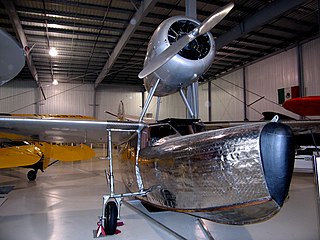
The Fleetwings Sea Bird was an American-built amphibious aircraft of the 1930s.

The Bullet Monoplane or Alexander Eaglerock Bullet was a low wing cabin monoplane that was a departure from traditional biplane aircraft of the era.

The Vickers F.B.12 was a biplane pusher fighter aircraft developed during World War I by Vickers Limited. The failure of the engine for which it was designed, and the obsolescence of the pusher configuration, resulted in its remaining an experimental type only.

The Verville Sport Trainer AT was a two-seat tandem biplane designed by Alfred V. Verville as a civilian version of the YPT-10 primary trainer, intended to appeal to the wealthy private owner.
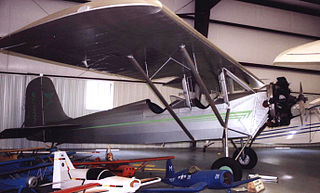
The Timm Collegiate was a series of American-built two-seat light aircraft of the late 1920s.

The Stout Skycar was a series of four one-off American light aircraft of the 1930s.

The Baumann Brigadier was a prototype American light transport aircraft of the late 1940s. It was a twin-engined monoplane, which, unusually, was of pusher configuration. Only two were built, plans for production never coming to fruition.

The Spartan C2 is a light aircraft produced in the United States in the early 1930s as a low-cost sport machine that would sell during the Great Depression.

The Paramount Cabinaire was a 1920s designed cabin biplane, designed by Walter J. Carr and produced by the Paramount Aircraft Corporation. Only eight were completed before production ceased.
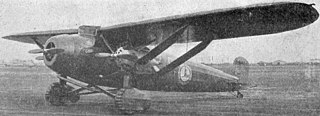
The Emsco B-2 Challenger was a US three-engined, six passenger aircraft flown in 1929. Only two were built and they were quite soon converted into two different Emsco types, one with one engine and the other with two.
The Emsco B-4 Cirrus was a mid-wing, two-seat trainer built in the US in the late 1920s. Six were built and three variants with more powerful engines flown.
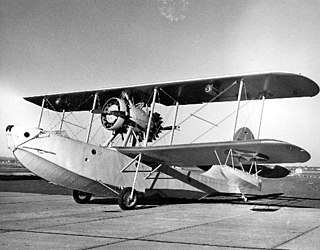
The Sikorsky XP2S was an American biplane patrol flying boat developed for the United States Navy during the early 1930s.
The Simplex Red Arrow was a US single-engined monoplane produced in the late 1920s and early 1930s and intended as club machine or mail transport. Most used radial engines in the 90–110 hp (67–82 kW) range. They carried one or two passengers whose seats could be open or enclosed. One variant, the Red Arrow Dual Plane, was easily converted from monoplane to biplane and was available with two versions of the much more powerful Wright Whirlwind engines. In all about 20 were built.
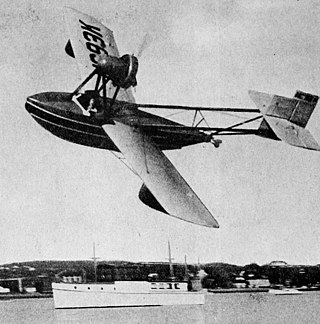
The Ireland Privateer was a 1930s American two-seat, single pusher-engined monoplane sports flying boat which could be equipped as an amphibian. About 18 were built.

The Cairns A was a low wing, two tandem seat monoplane with a metal structure and stressed metal skin. It first flew late in 1931 with a 90 hp (67 kW) engine but was later fitted with more powerful engines including a 185 hp (138 kW) radial.
The States Super Monoplane was a tandem two seat, civil sport and trainer aircraft built in small numbers at the start of the U.S Great Depression.

















